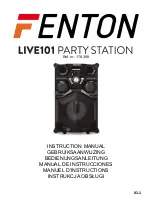
NOVA AND NOVA PRO
Measurements
35
Note:
❑
the
x1
Auto tests will be automatically skipped for RCD type B with rated residual
currents of I
ΔN
= 1000 mA
❑
the
x5
Auto tests will be automatically skipped in the following cases:
RCD type AC with rated residual currents of I
ΔN
= 1000 mA
RCD type A and B with rated residual currents of I
ΔN
>= 300 mA
❑
In these cases, the auto test result passes if the t1 to t4 results pass, and on the
display are omitted t5 and t6.
5.3.9.2.
WARNINGS
❑
Leakage currents in the circuit following the residual current device (RCD) may
influence the measurements.
❑
Special conditions in residual current devices (RCD) of a particular design, for
example of type S (selective and resistant to impulse currents) shall be taken into
consideration.
❑
equipment in the circuit following the residual current device (RCD) may cause a
considerable extension of the operating time. Examples of such equipment might be
connected capacitors or running motors.
5.4.
Z LOOP Fault loop impedance and prospective fault current
The loop impedance function has three sub-functions available:
LOOP IMPEDANCE
sub-function performs a fast fault loop impedance measurement on
supply systems which do not contain RCD protection.
LOOP IMPEDANCE Rs
sub-function with configurable RCD-value performs fault loop
impedance measurement on supply systems which are protected by RCDs
5.4.1.
Fault loop impedance
The fault loop impedance measures the impedance of the fault loop in the event that a short-
circuit to an exposed conductive part occurs (i.e. a conductive connection occurs between the
phase conductor and protective earth conductor). In order to measure loop impedance, the
instrument uses a high-test current.
Prospective fault current (IPFC) is calculated on the basis of the measured resistance as
follows:
Where:
𝐼
𝑃𝐹𝐶
=
𝑈
𝑁
×
𝑠𝑐𝑎𝑙𝑖𝑛𝑔
𝑓𝑎𝑐𝑡𝑜𝑟
𝑍
𝐿−𝑃𝐸
Nominal input voltage U
N
Voltage range
115V
(93 V
U
L-PE
134 V)
230V
(185 V
U
L-PE
266 V)
















































